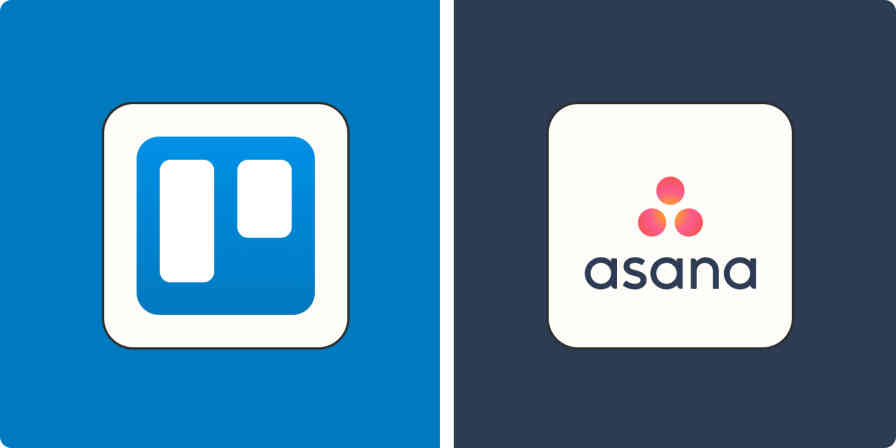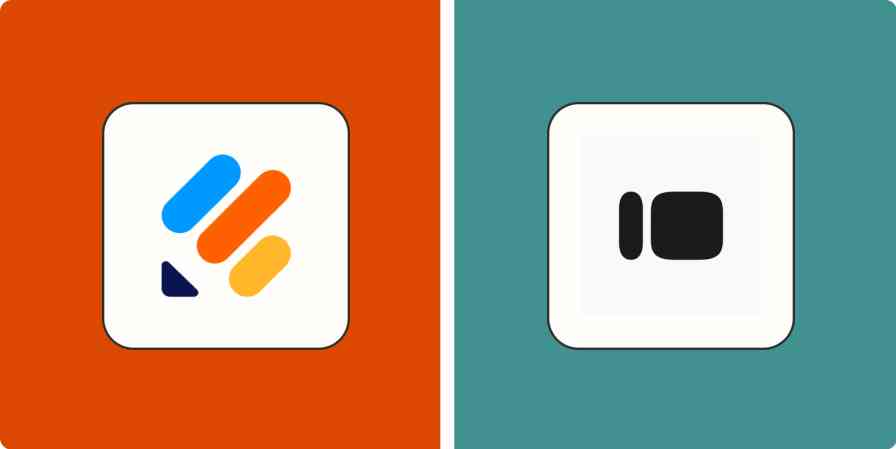The creator economy is buzzing with tools to help online entrepreneurs turn their knowledge and skills into a business. Kajabi and ClickFunnels are two of those tools: they combine several solutions to help creators easily build, market, and sell digital products.
I've been using all sorts of marketing tools for years now, and I created accounts with both Kajabi and ClickFunnels to test all their features and better understand each one's strengths and weaknesses. Here, I'll break down the pros and cons of each platform and explain how they stack up—to help you decide which is the best for your business.
ClickFunnels vs. Kajabi at a glance
ClickFunnels and Kajabi are both powerful platforms with tools to help you start and scale your online business. But when it comes down to it, they have pretty distinct core value propositions:
Kajabi is 100% built for creating digital products, from courses to coaching programs and communities to podcasts. It has a robust digital content delivery system.
ClickFunnels is focused more on the marketing and sales side. It'll give you fully automated funnels optimized for conversion to make promoting and selling your digital content easy.
Having said that, ClickFunnels and Kajabi do share many similarities that can make it tougher to pick between the two. So here's a quick rundown of their features—but keep reading for more details about each app and my experience testing them.
| Kajabi | ClickFunnels |
|---|---|---|
Ease of use | ⭐⭐⭐⭐⭐ Super easy to use for less tech-forward and design-minded users | ⭐⭐⭐⭐⭐ Also easy to use with lots of training materials to help if you get stuck |
Marketing and sales | ⭐⭐⭐⭐ Nice range of templates for building landing pages, websites, and sales funnels, but has limited funnel capability | ⭐⭐⭐⭐⭐ Excellent assortment of templates for all marketing assets and an unbeatable funnel system; you can split test funnels for conversion optimization |
Courses | ⭐⭐⭐⭐⭐ Robust course creation platform with advanced features like certificates, live sessions, quizzes, and automation | ⭐⭐⭐ Average course platform lacking advanced features. |
Coaching | ⭐⭐⭐⭐⭐ Includes live video and scheduler to enable you to host coaching sessions without third-party tools like Zoom | Does not intrinsically support coaching |
Community | ⭐⭐⭐⭐⭐ Excellent community-building tools, including live streaming and chat, newsfeed, and challenges to keep your audience engaged; you can also monetize your community with one-time or subscription payments | Does not intrinsically support communities |
Email marketing | ⭐⭐⭐⭐⭐ Built-in email marketing functionality with the ability to create automated email sequences; plus, pre-written email copy to make your life easier | ⭐⭐⭐ Limited email marketing functionality, so you either figure it out with workflows or integrate a third-party tool |
Integrations | ⭐⭐⭐⭐ 10 native integrations and connects with Zapier | ⭐⭐⭐⭐ 25 native integrations and connects with Zapier |
Pricing | Basic: $149/month Growth: $199/month Pro: $399/month
| Basic: $147/month Pro: $197/month Funnel Hacker: $297/month |
Kajabi is better for creating digital products
Both platforms allow you to create digital products, like courses and memberships. But Kajabi supports more product types, including coaching programs, communities, and podcasts, which can help with scaling your business.
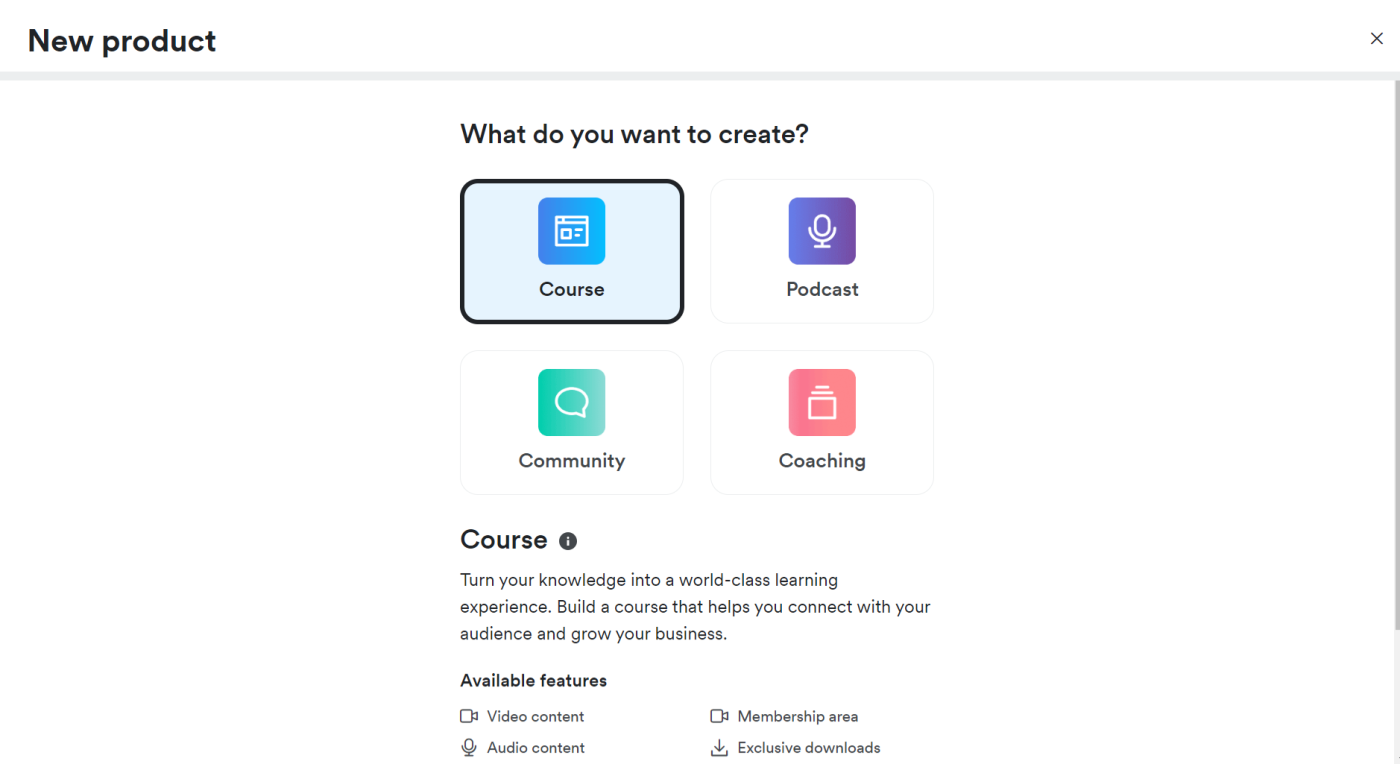
Let's start with a product that's shared between them: courses.
Kajabi and ClickFunnels offer a nearly identical course creation workflow: provide general information about the course, and receive a structure with modules and lessons to hit the ground running. Customizing the modules and lessons is straightforward with both tools. You can drip the course to customers over a set period or lock modules to encourage them to complete specific lessons. Both platforms allow you to upload video and audio course materials directly from your device without third-party hosting sites.
But after that, Kajabi takes things up a notch by offering "when, then, if" automation rules in lessons to better manage your students and business. For example, you can set a rule to issue students a certificate or grant them an offer when they complete a lesson.
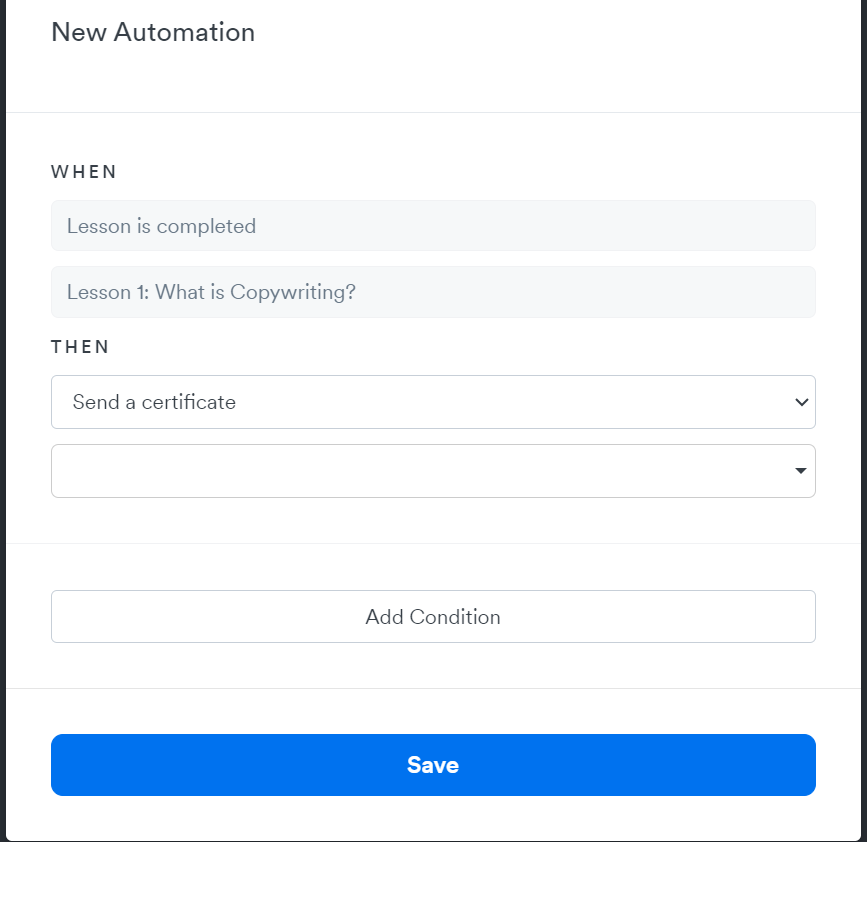
And if you want to give your students a more interactive learning experience, Kajabi allows you to hold live video sessions. For instance, you could hold weekly Q&A sessions to discuss the course and answer any questions your students might have. It even lets you record sessions and publish them as lessons.
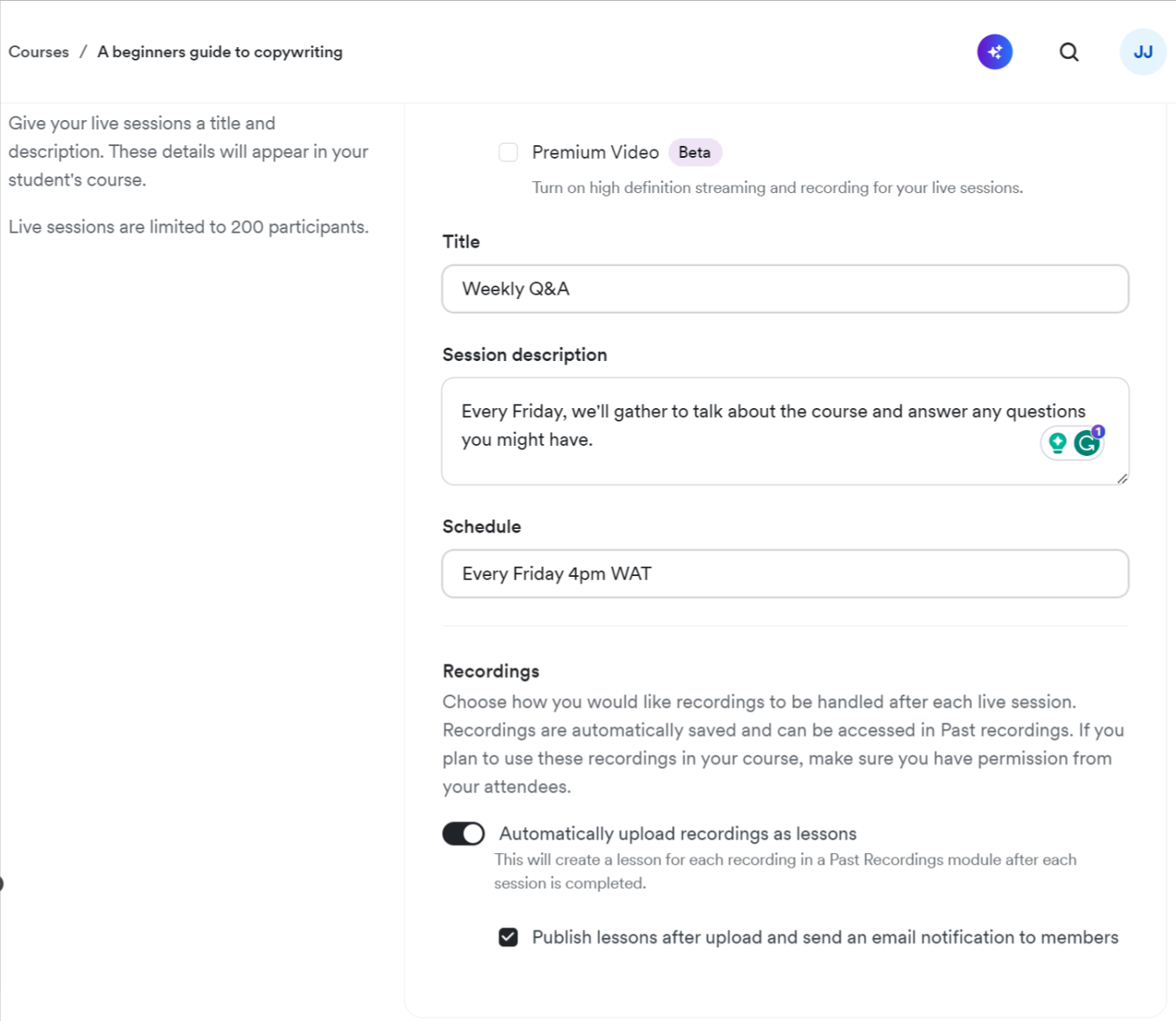
Kajabi's courses also include assessments with short answer, file upload, and other question types, and you can require a passing grade to advance in the course to help increase student engagement. There's even automatic grading for checkbox and multiple-choice questions.
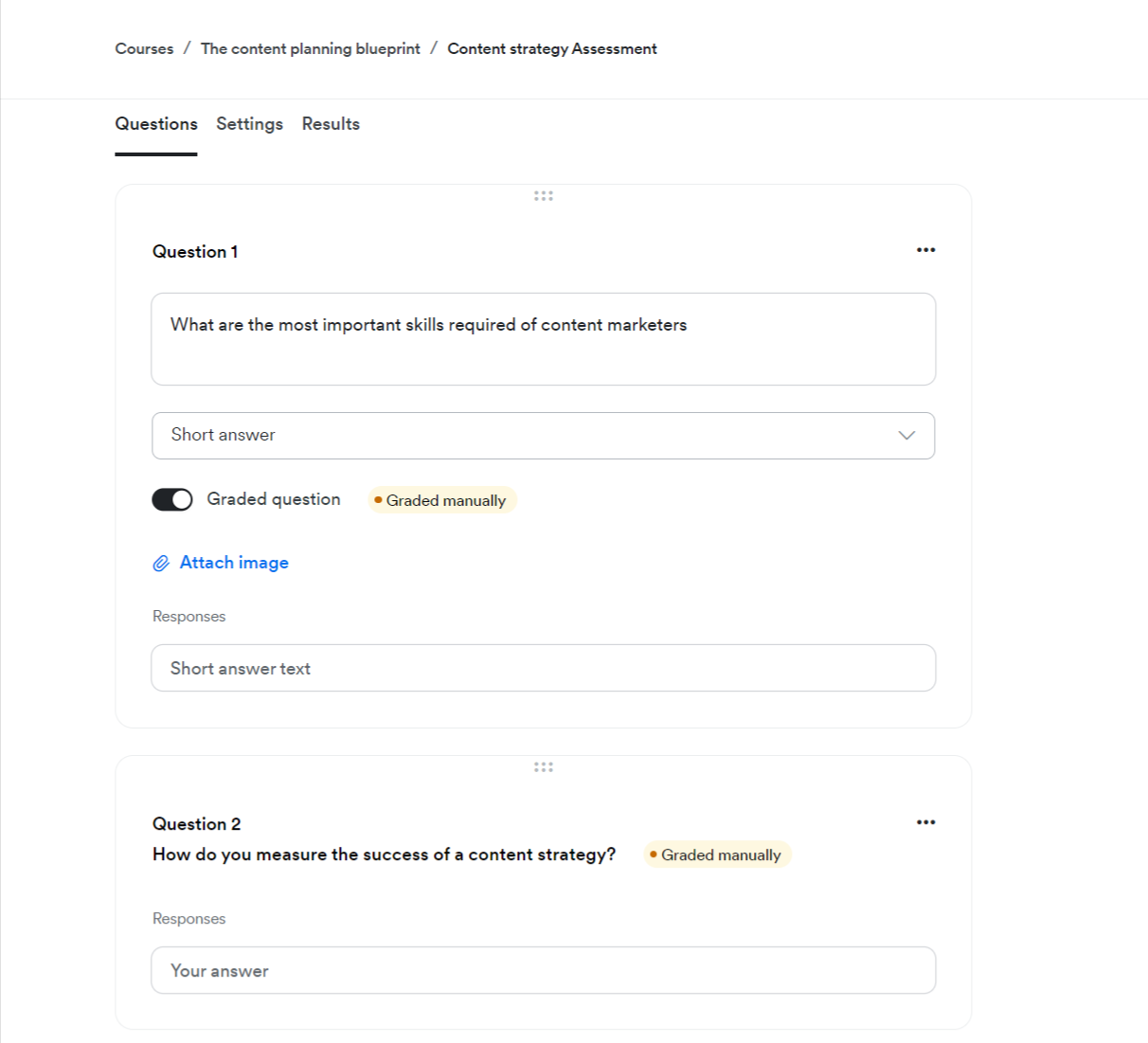
These advanced features are all notably lacking from ClickFunnels' courses.
When you're ready to create a recurring revenue system, Kajabi allows you to build memberships—you just have to add the course and community to an offer. You can create communities with multiple paywalled access groups that subscribers can only join after purchasing. And you'll get features like circles (Q&A), challenges, live meetup sessions, and broadcasts to manage your community.

It's a really streamlined process: create a course > create a community > add them to an offer.
In ClickFunnels, creating a membership program follows a different process. The platform doesn't support communities, so memberships are paywalled pages inside a sales funnel. Setting up the membership funnel is pretty confusing—I spent several hours watching YouTube videos to figure it out. Since ClickFunnels and Kajabi play very well together, I'd argue that it's better to integrate the two, so you can create courses and memberships with Kajabi and then use ClickFunnels for sales.
ClickFunnels offers more for conversion optimization
Once you're done creating your digital products, you need a way to sell them. Both platforms provide sales funnels to help you capture leads and turn them into customers, but ClickFunnels' system is on a whole other level. The reason is obvious: the tool was built for sales.
Creating funnels is similar in both Kajabi and ClickFunnels: start from scratch or select a template, then customize it with a visual drag-and-drop builder. After that, ClickFunnels quickly differentiates itself with powerful funnel workflows, A/B testing, and conditional split paths.
When setting up a funnel in ClickFunnels, you can create variations of every page and then split traffic between them to see which brings in the most sales. You can test everything from design to headlines, copy, images, and CTAs, and then use the results to optimize your offer and improve conversions.
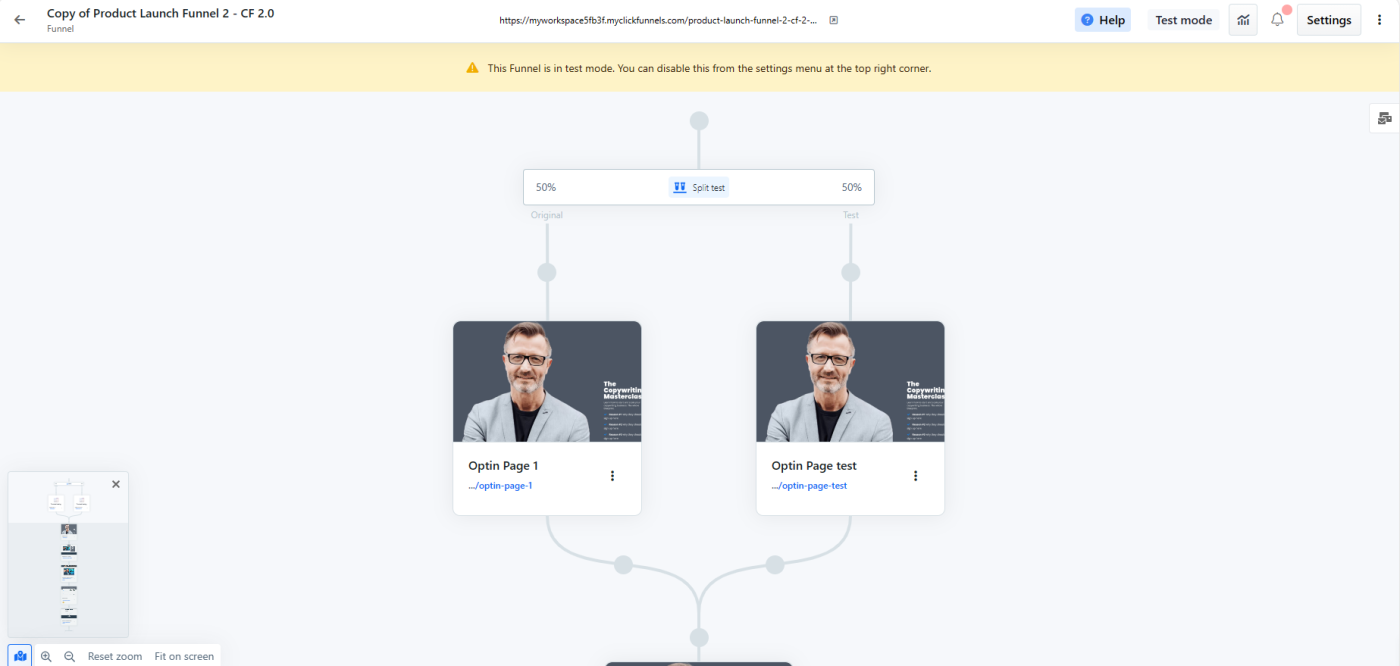
Once you set that up, you can further optimize your funnel with conditional split paths that direct visitors to follow different steps depending on the action they take on your page. For example, you can set a condition to send visitors down a YES path and reward them with a gift, like early access to your course, if they provide their email address. Visitors who do not meet that condition will go down the NO path.
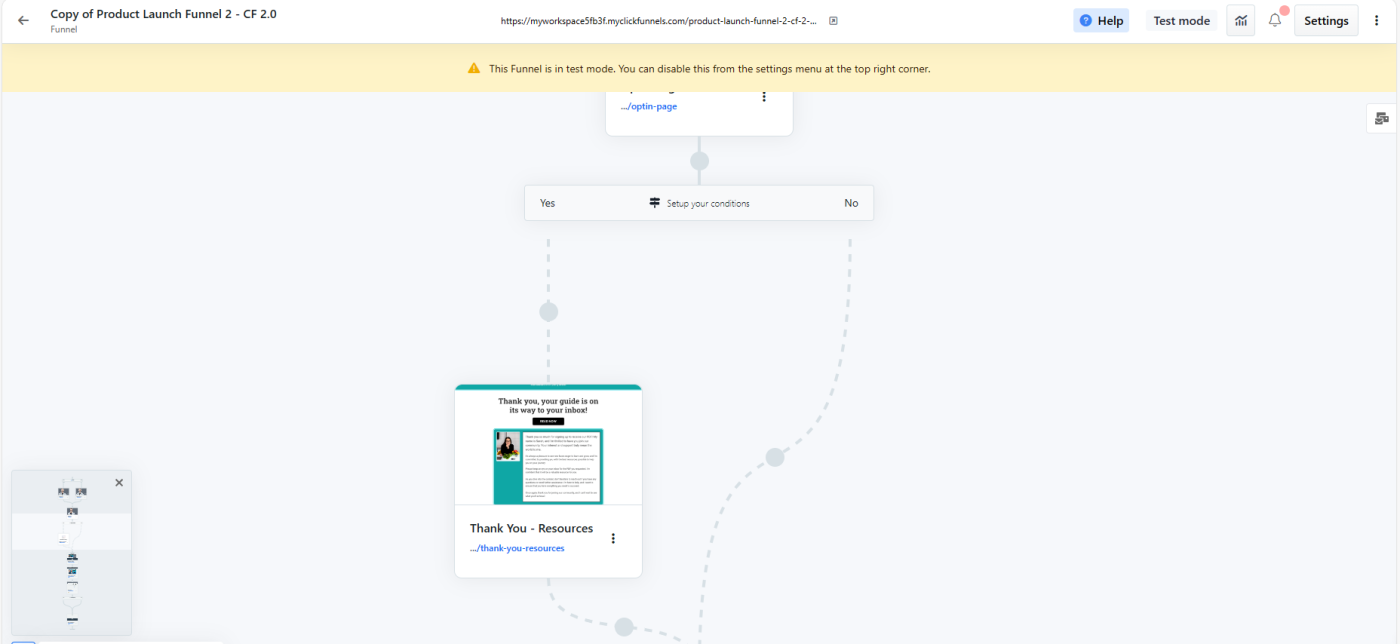
This feature helps you filter customers who pass on to the steps in your funnel. That way, you can target them better with upsells, downsells, and emails, increasing your chances of conversion. Unfortunately, Kajabi is lacking in this aspect, as it doesn't allow any form of funnel testing or optimization. That means there's no way to know why your funnel isn't performing as expected or the specific ways to improve it.
On top of that, ClickFunnels gives you many more funnels on all plans than Kajabi. And if you're also promoting physical products, you'll find ClickFunnels' funnels especially useful, as they enable you to promote several products simultaneously.
Bottom line: if driving the most leads to your offer and converting them to customers is your primary goal, ClickFunnels is your best bet.
Kajabi is better for email marketing
Part of the marketing and sales capability of ClickFunnels and Kajabi is built-in email marketing. In both, you'll find automatic tagging systems, good-looking email templates, and an interactive drag-and-drop builder to make customization easy. But when it comes down to it, Kajabi offers a more streamlined process, making it a better fit for creators.
For example, once you sign up with Kajabi and upload your contact list, you can start sending emails immediately. There's no need for any extra setup or configuration. ClickFunnels is quite the opposite: it requires you to set up a custom domain and SMTP authentication before you can send emails. While this might not be a big deal for experienced marketers, less tech-forward creators might find it complicated.
That said, the most notable difference between ClickFunnels and Kajabi's email marketing is that ClickFunnels limits you to email broadcasts, while Kajabi allows you to send broadcasts and dripped email sequences. You'll find templates for real situations like making a referral, announcing an event, or showcasing your products. You can easily customize each template to your liking, set your schedule, and Kajabi will handle the rest.
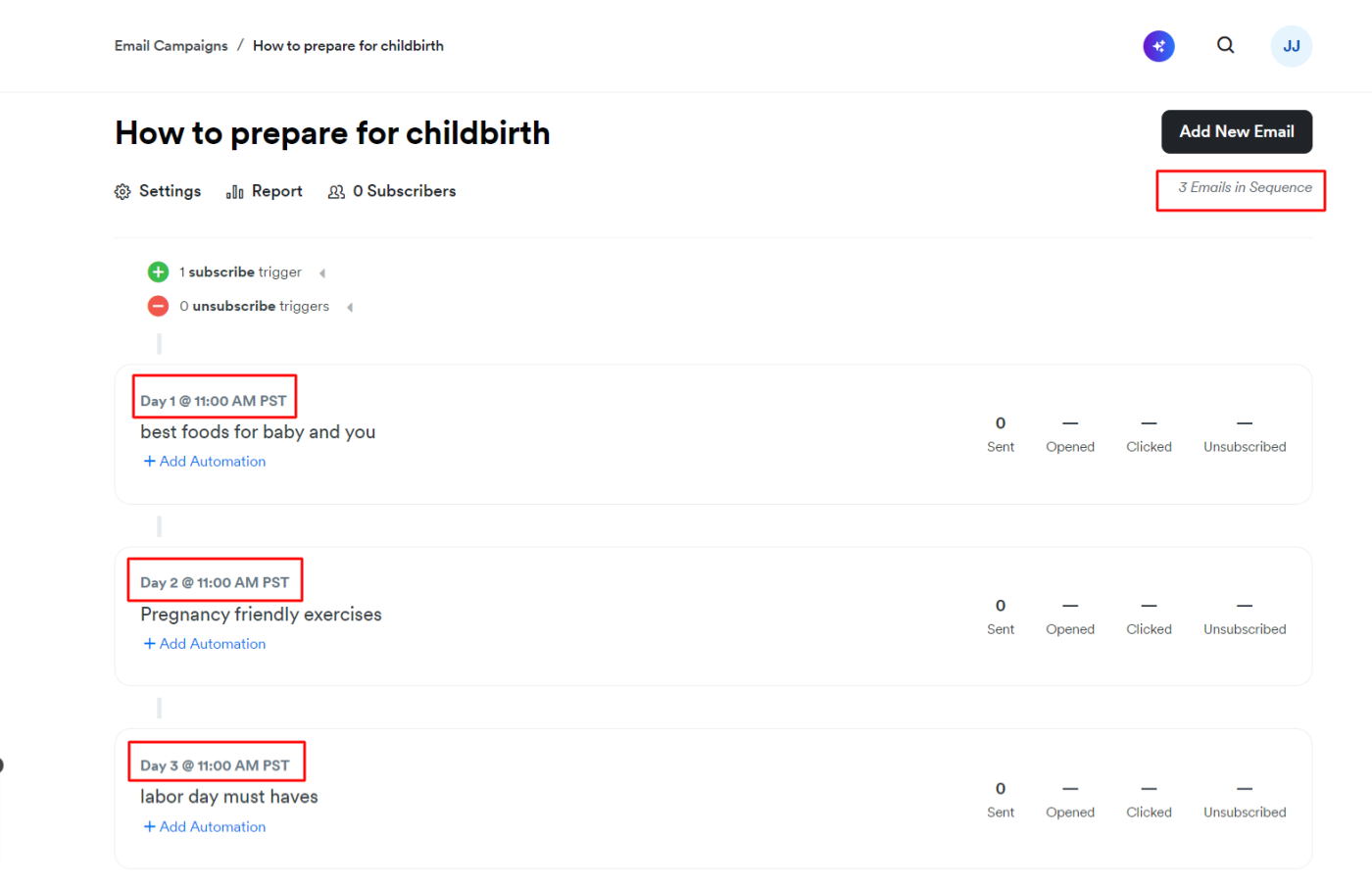
You can even use automation rules to make your campaign more powerful. So, you can automate things like "when email is clicked, add a tag and send a single-use coupon." Kajabi also includes thoughtfully-written email copy inside all its templates. You're at liberty to personalize the copy or discard it, but it comes in handy if you want to save time and use tested copy that's proven to convert.
With ClickFunnels, you don't get email sequences out of the box. The only way to set up a sequence is to trigger a workflow (e.g., an event) and then use delays to connect the different emails as separate steps in your workflow. If that workaround is too complex, you can integrate your favorite email marketing tool, but you'll have to pay extra for it.
Pricing is relatively similar, but ClickFunnels has a slight edge
Neither ClickFunnels nor Kajabi would be considered downright affordable. They're both on the pricier side of marketing software, with starting prices just shy of $150/month. But when you compare the features they offer at different price points, ClickFunnels has the slight edge.
For instance, Kajabi's basic plan costs $149/month and includes three products (courses, podcasts, and communities), three funnels, and one admin user. Meanwhile, ClickFunnels costs $147/month for the same level and gives you 20 funnels, unlimited products (including courses), and three admin users. Their middle plans are also similar in price, with ClickFunnels having the upper hand with funnels and products.
The pricing gets significantly different in their highest tier, where ClickFunnels charges $297/month and Kajabi $399. You still won't get unlimited funnels or products in Kajabi, but you'll be able to access a custom code editor if you want to customize your emails and pages with CSS styling. Meanwhile, ClickFunnels offers this code editor on all its plans.
There's no clear winner here because they both lack entry-level pricing, but ClickFunnels offers a lot more features for its price.
Both tools integrate with Zapier
Every tool becomes more powerful when you connect it with the rest of your tech stack. And since both Kajabi and ClickFunnels integrate with Zapier, you can connect them to thousands of other apps. This means you can do things like automatically create contact profiles when someone completes a form or create tasks for new purchases.
Learn more about how to automate Kajabi or how to automate ClickFunnels, or get started with one of these pre-made workflows.
Submit Kajabi forms for new Facebook Lead Ads leads
Create Google Sheets rows for new Kajabi purchases
Add new Facebook Lead Ads leads to ClickFunnels Classic lists
Add new ClickFunnels Classic contacts to Google Sheets
It's also possible you'll want to use both tools: Kajabi for creating your course and ClickFunnels for promoting it. In that case, you can use Zapier to integrate Kajabi and ClickFunnels.
Zapier is a no-code automation tool that lets you connect your apps into automated workflows, so that every person and every business can move forward at growth speed. Learn more about how it works.
Kajabi vs. ClickFunnels: Which should you choose?
Go with Kajabi if delivering digital content via courses or communities is your main goal. You'll get all the tools you need to turn your knowledge into income without paying for additional software, and you can promote it well, especially via email marketing. You just won't have access to in-depth conversion optimization features.
Choose ClickFunnels if sales and marketing are your priority and you don't mind using a different tool to deliver digital content. ClickFunnels will give you a robust system to market and sell both digital and physical products.
Related reading:

